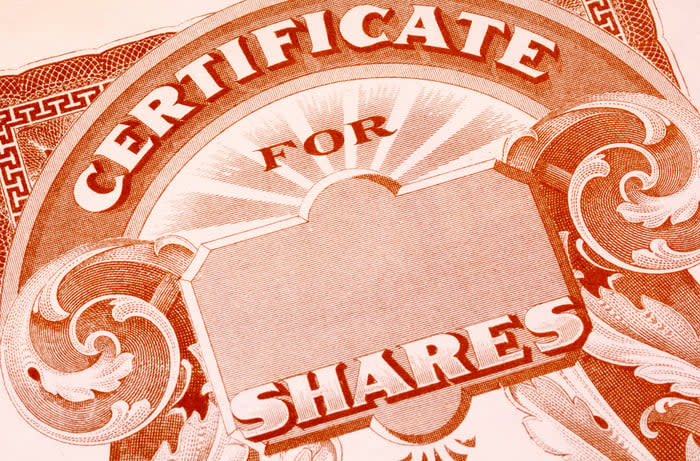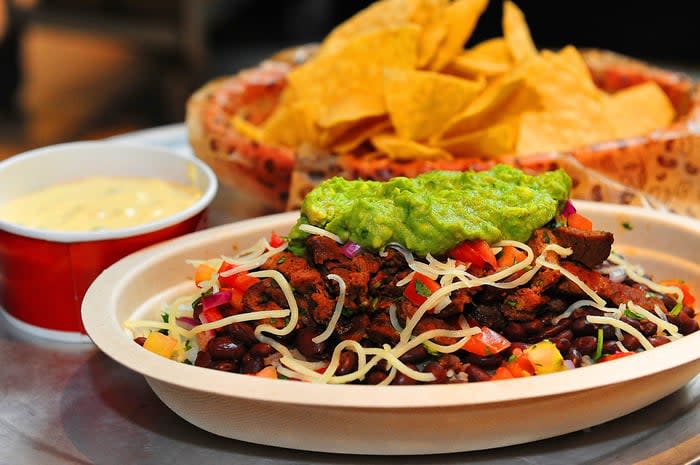2 Stock-Split Stocks I Wouldn't Touch With a 10-Foot Pole
Over the last 30 years, investors have pretty much always had a new innovation or trend to latch onto. Next-big-thing technologies like the internet, genome decoding, 3D printing, blockchain technology, and the metaverse represent some of the examples of potentially game-changing trends for corporate America.
At the moment, investors have two buzzy trends that they're flocking to. While you're probably familiar with the rise of artificial intelligence (AI), you might be unaware of just how popular stocks enacting splits have become.
A stock split is an event that allows a publicly traded company to change its outstanding share count and share price by the same magnitude without having any impact on its market cap or operating performance. Splits come in two forms: forward and reverse.
With a forward-stock split, a company is decreasing its share price to make it more nominally affordable for retail investors and perhaps its employees. Conversely, the purpose of a reverse-stock split is to increase a company's share price, usually to ensure it meets the minimum listing standards on a major stock exchange.

Image source: Getty Images.
Most investors are focused on the former. That's because companies conducting forward-stock splits often have high-flying stocks that are a direct result of out-innovating and out-executing their peers. Since 2024 began, eight high-profile companies have announced or completed forward-stock splits.
According to a study from Bank of America Global Research, companies conducting forward-stock splits have averaged a 25.4% return (since 1980) in the 12 months after their split is announced. That compares to an 11.9% 12-month return for the benchmark S&P 500 over the same timeline.
Despite this promising long-term data, not all stock-split stocks are worth buying. There are two "Class of 2024" stock-split stocks I wouldn't touch with a 10-foot pole.
Nvidia
Despite finishing June 18 as the largest publicly traded company in the world, I want absolutely nothing to do with AI leader Nvidia (NASDAQ: NVDA). Nvidia announced a 10-for-1 stock split on May 22, which was completed following the closing bell on June 7.
Shares of Nvidia have risen by more than 800% since 2023 began -- a nearly $3 trillion increase in market value -- because its graphics processing units (GPUs) have quickly become the standard in AI-accelerated data centers. Semiconductor analysis company TechInsights recently noted that Nvidia accounted for 98% of the 3.85 million AI-GPUs shipped in 2023.
The seemingly insatiable demand for AI-GPUs has worked in Nvidia's favor, too. The laws of economics state that if the demand for a good or service outpaces supply, the price of that good or service will increase until demand tapers. Nvidia has been able to substantially increase the price of its prized H100 GPUs, which sent its adjusted gross margin soaring to 78.4% in the first fiscal quarter (ended April 28).
While there are plenty of reasons for Nvidia's shareholders to be thankful, there are also numerous warnings that Wall Street's hottest stock-split stock is in a bubble.
For starters, we haven't seen a next-big-thing investment for at least 30 years that's avoided an eventual bubble-bursting event. Regardless of how promising the technology, innovation, or trend, investors always overestimate the adoption of anything that creates buzz on Wall Street. With no company being aided more by the rise of AI than Nvidia, an AI bubble-bursting event would, presumably, hurt its stock the most.
I think it's fair to say that competition is also a problem. While optimists are quick to point out that Nvidia's GPUs have a compute advantage over other AI-GPUs, the issue is more of a numbers game than a concern about performance. Nvidia can't meet all of its orders, which opens the door for external competitors to steal share.
As I've previously pointed out, this competition is internal, as well. Nvidia's four top customers, which account for around 40% of its net sales, are members of the "Magnificent Seven." The problem is that these four Magnificent Seven constituents are developing AI-GPUs for their own data centers. Even if these chips are used purely as a complement to Nvidia's H100 GPU, it suggests that we're witnessing a peak in reliance on Nvidia's data center hardware.
The valuation is pretty terrifying, too. Although Nvidia isn't ridiculously expensive, based on its price-to-earnings-growth ratio (PEG ratio), the company's trailing-12-month price-to-sales ratio of 42 equates to the peak levels seen with Cisco Systems and Amazon prior to the dot-com bubble bursting. If history rhymes, Nvidia's stock may eventually plunge by more than 50%.

Image source: Chipotle Mexican Grill.
Chipotle Mexican Grill
The second stock-split stock I wouldn't touch with a 10-foot pole right now is none other than fast-casual restaurant chain Chipotle Mexican Grill (NYSE: CMG). Chipotle's board announced a 50-for-1 forward split on March 19, which was approved by shareholders at the company's annual meeting earlier this month. This mammoth stock split will become effective after the closing bell on Tuesday, June 25.
Just because I want nothing to do with Chipotle doesn't mean the company hasn't performed well from an operating standpoint. The company's management team realized a long time ago that consumers will pay more for higher-quality food. This is why Chipotle aims to source its vegetables locally, when possible, as well as uses only responsibly raised meats.
Chipotle's limited menu also explains its long-term success. By purposely keeping its menu small, the company ensures that food preparation is efficient and guests are served quickly. Further, new food innovations get more pop with such a small menu.
But at some point, the company's valuation no longer makes sense -- and we've certainly hit that point, in my view.
Following a nearly 15,500% increase in its shares since its $22 initial public offering price in January 2006, Chipotle is trading at 62 times forecast earnings for 2024, and 51 times forward-year earnings. Even with Wall Street forecasting an annualized earnings growth rate of 22% through 2028, things don't make sense.
Though Chipotle's mid-teens sales growth probably sounds impressive given the company's already large scale, its revenue growth isn't quite as spectacular if you dig a bit deeper. Comparable restaurant sales during the first quarter grew by 7%, with new store openings making up the remainder of its growth. This 7% comparable-store growth was derived from a 5.4% increase in transactions and a 1.6% increase in check size.
While 7% comparable-store sales growth is impressive in the fast-casual restaurant industry, it doesn't merit a forward P/E ratio of 51, especially when some of this increase is the result of inflation pushing prices higher.
I'll also add that there's only so much innovation that Chipotle can squeeze out of its business. The addition of mobile-order drive-thru lanes ("Chipotlanes"), as well as the introduction of an occasional new menu item, have moved the needle -- but not enough to command this much of a valuation premium.
I'll be looking for Chipotle Mexican Grill's stock to meaningfully pull back after its stock-split euphoria wears off.
Should you invest $1,000 in Nvidia right now?
Before you buy stock in Nvidia, consider this:
The Motley Fool Stock Advisor analyst team just identified what they believe are the 10 best stocks for investors to buy now… and Nvidia wasn’t one of them. The 10 stocks that made the cut could produce monster returns in the coming years.
Consider when Nvidia made this list on April 15, 2005... if you invested $1,000 at the time of our recommendation, you’d have $775,568!*
Stock Advisor provides investors with an easy-to-follow blueprint for success, including guidance on building a portfolio, regular updates from analysts, and two new stock picks each month. The Stock Advisor service has more than quadrupled the return of S&P 500 since 2002*.
*Stock Advisor returns as of June 24, 2024
Bank of America is an advertising partner of The Ascent, a Motley Fool company. John Mackey, former CEO of Whole Foods Market, an Amazon subsidiary, is a member of The Motley Fool's board of directors. Sean Williams has positions in Amazon and Bank of America. The Motley Fool has positions in and recommends Amazon, Bank of America, Chipotle Mexican Grill, Cisco Systems, and Nvidia. The Motley Fool has a disclosure policy.
